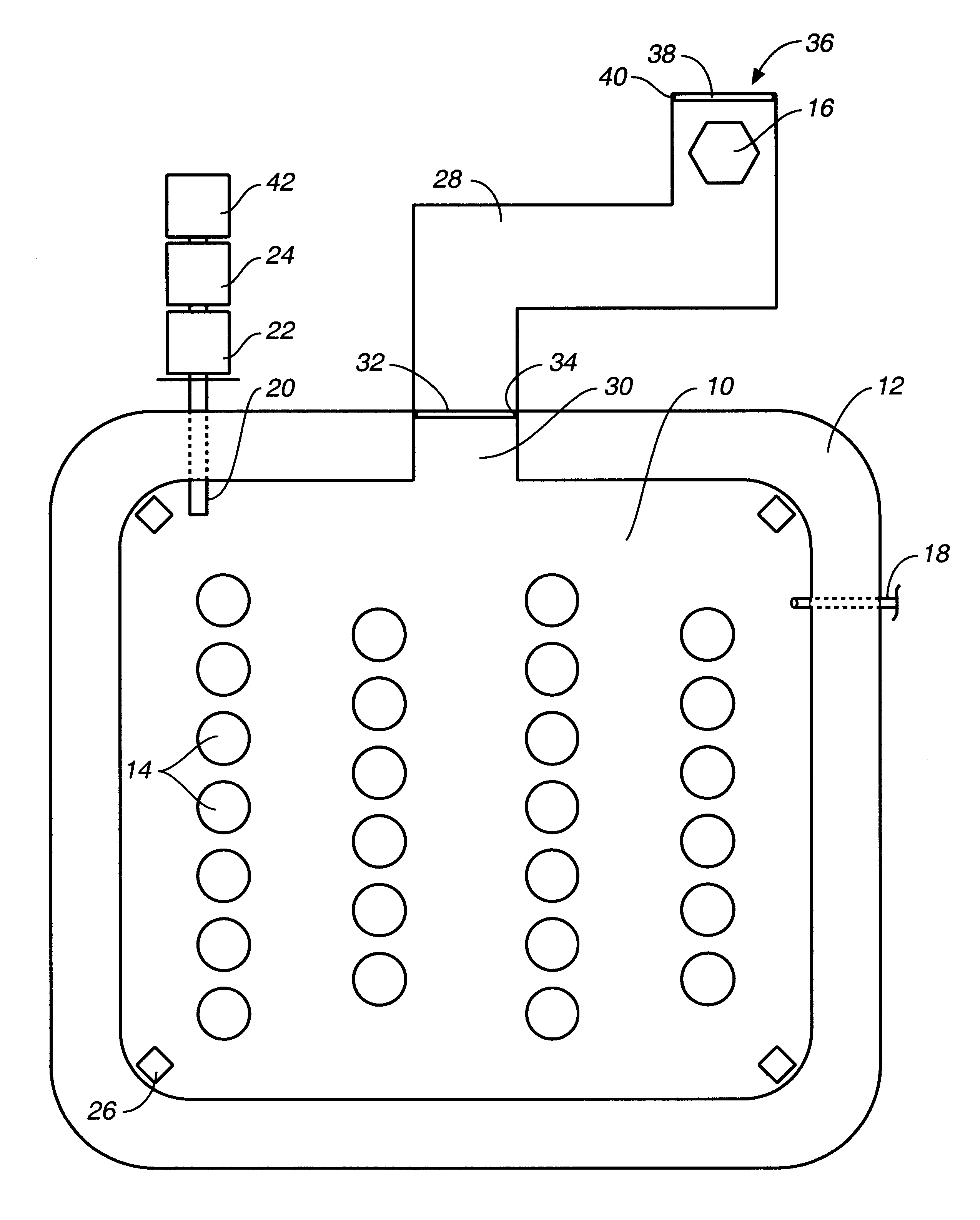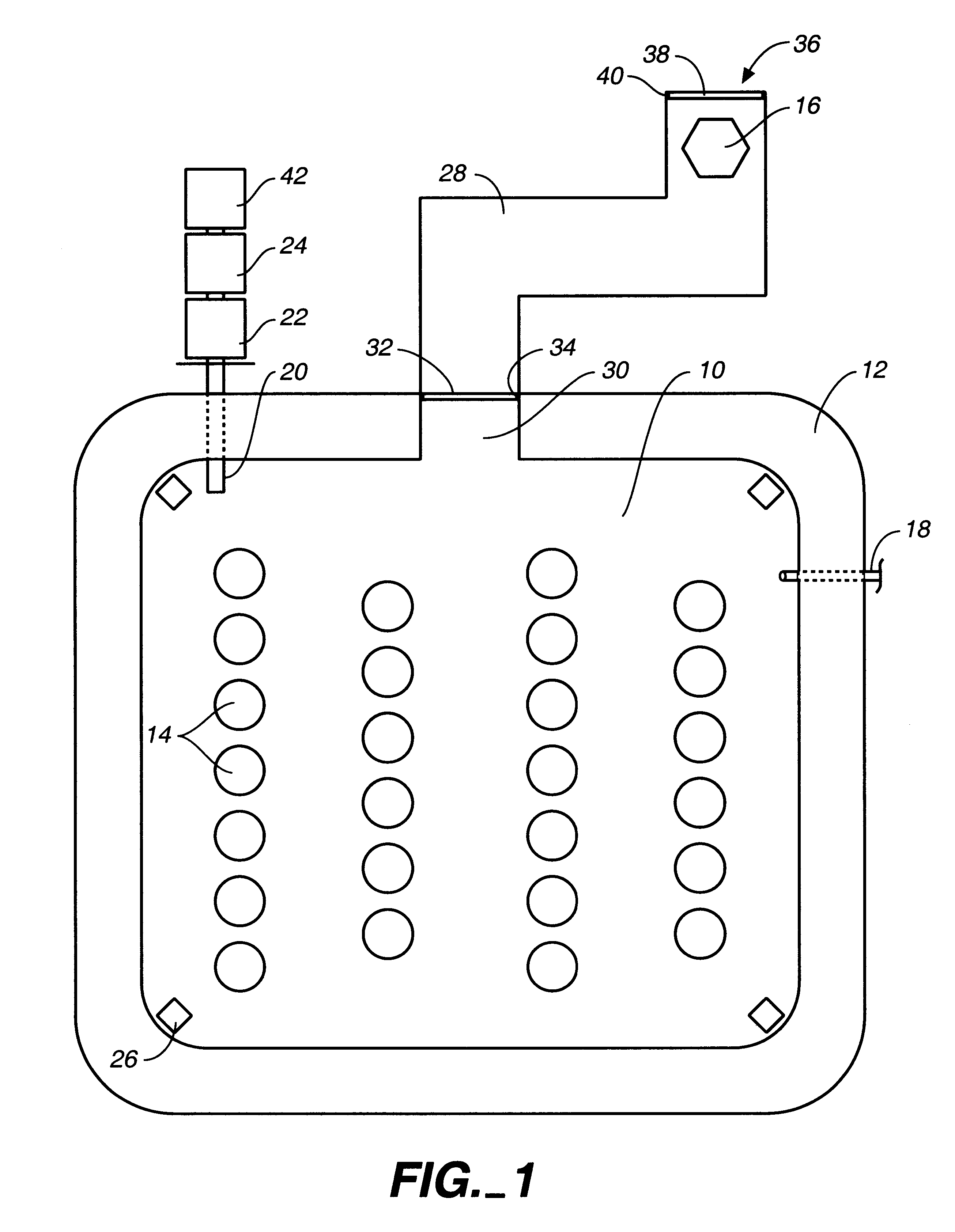Method of using nuclear waste to produce heat and power
- Summary
- Abstract
- Description
- Claims
- Application Information
AI Technical Summary
Problems solved by technology
Method used
Image
Examples
Embodiment Construction
Referring to FIG. 1, a plan view of the containment room and related components of the present invention, the containment room 10 may be subterranean or above-ground. Preferably it is subterranean and lined with a concrete or earth fill wall 12 of sufficient thickness to minimize external radioactive levels according to accepted nuclear waste form engineering practices. When sealed, the room will also be gas tight. Dimensions of the containment room may be adapted to heat generation needs, disposal needs and schedules, rates of waste production, and monitoring capabilities, but one size could be roughly twenty feet in width and breadth and have a ten to twelve foot ceiling height.
Preliminary to placement in room 10, radioactive waste may be stored in long-life containers 14 in the form of columns. It is well known that radioactive waste in solution may be evaporated until radioactive products are in the solid state. The solid products may be heated to maximize oxide production, and ...
PUM
 Login to View More
Login to View More Abstract
Description
Claims
Application Information
 Login to View More
Login to View More - R&D
- Intellectual Property
- Life Sciences
- Materials
- Tech Scout
- Unparalleled Data Quality
- Higher Quality Content
- 60% Fewer Hallucinations
Browse by: Latest US Patents, China's latest patents, Technical Efficacy Thesaurus, Application Domain, Technology Topic, Popular Technical Reports.
© 2025 PatSnap. All rights reserved.Legal|Privacy policy|Modern Slavery Act Transparency Statement|Sitemap|About US| Contact US: help@patsnap.com


